Worshippers in Lalibela © 2020 Charles & Mary Love
[We visited Ethiopia in January, 2020, just before the COVID-19 pandemic. This is the first of two posts about this fascinating country.]On The Prowl: Ethiopia
When we traveled to Jerusalem in the late ’90s, we noticed a group of black men and women dressed in long white robes waiting outside the Church of the Holy Sepulchre. They hovered, like a swarm of white butterflies, on a set of stairs that led to an old wooden door. Fascinated by their attire and elegant bearing, we asked a passerby who they were. “They’re Ethiopians,” she said, “on a pilgrimage to their special chapel at the church.”
The encounter aroused our curiosity . We learned that Ethiopia is one of the oldest, most ethnically diverse countries in sub-Saharan Africa and has great natural beauty: high mountains, deserts, tropical forests and remote lakes and rivers. The dominant religion is Ethiopian Orthodox, whose followers express their devotion in colorful celebrations throughout the year.
This was enough for us to add Ethiopia to our bucket list.
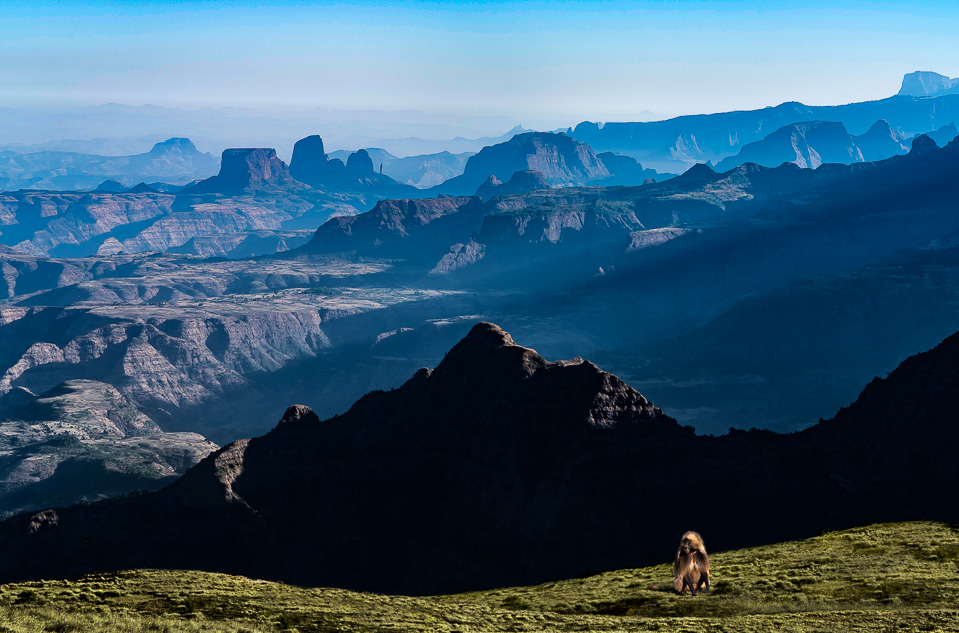
Twenty years later, in January 2020, we finally arrived in the country’s capital, Addis Ababa. Wild Frontiers Travel, an award-winning adventure travel company that specializes in exotic destinations, helped us prepare a customized itinerary.
Initially, we traveled north to the Simien Mountains. This UNESCO World Heritage site is often called the “rooftop of Africa” because of the breadth and height of the mountain range. It’s the only habitat in the world for the endangered Abyssinian ibex as well as thousands of grass-grazing gelada monkeys.
These mountains are spectacular, the “most marvelous of all Abyssinian landscapes,” as explorer and writer Rosita Forbes wrote. She continued: “A thousand years ago, when the old gods reigned in Ethiopia, they must have played chess with these stupendous crags. … When they had to exchange their games for shields and bucklers to fight the new men clamoring at their gates, they turned the pieces of their chessboard into mountains.”
The Northern Historical Route
Next, we followed the northern historical route. It includes three UNESCO World Heritage sites: Lalibela, a city with rock-hewn churches that date to the 12th century; Axum, capital of an ancient empire that thrived until the fifth century; and the royal enclosure in Gondar, the country’s former capital. The castles and palaces here, built by a dynasty of Christian kings in the 17th century, have earned Gondar the nickname “the Camelot of Africa” because of their resemblance to medieval European architecture.
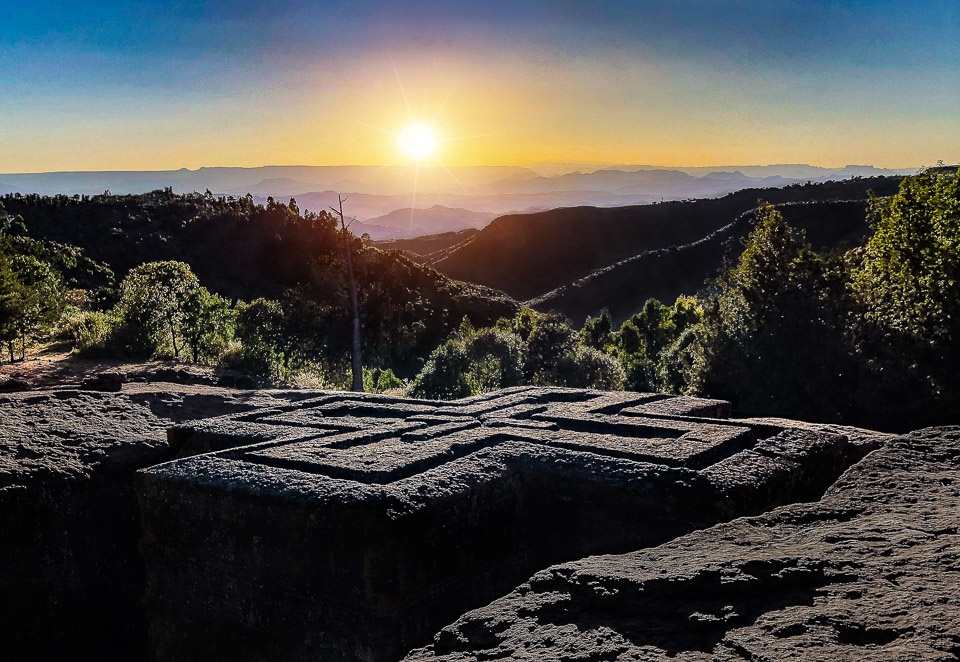
Gondar is also one of the best places to experience Timkat, the most important celebration on the Ethiopian Orthodox calendar and an event on UNESCO’s list of Intangible Cultural Heritage. The festival, which occurs in January each year, commemorates the baptism of Jesus by John the Baptist.
Timkat is first and foremost a solemn religious occasion, when crowds of men, women and children come together to pray, either individually or together. But it’s also a festive time when extended families share meals, and people of all ages congregate in the streets and squares to dance and sing. On Timkat Eve, we joined worshippers and clergy from churches around the city as they proceeded to 17th-century Fasilidas’ Pool, an architectural landmark and large pool around which the main worship service would take place the next day. We lingered awhile, then returned before dawn to take part in a candlelight vigil and the final ceremony.
All things considered, Timkat was as exciting as we had anticipated. The fervent worship, jubilant dancing, urgent drumbeats and intoxicating smell of incense will always linger in our memory.
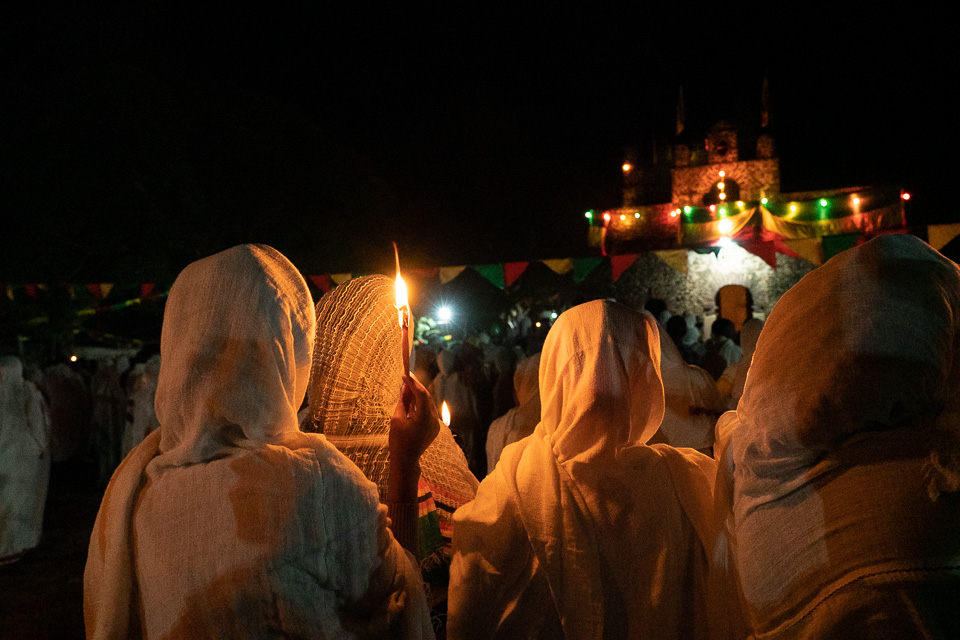
We also visited Lake Tana, Ethiopia’s largest lake and source of the Blue Nile. Priests and monks still hold services in centuries-old churches and monasteries located on peninsulas and islands around the lake. A half-day boat trip took us to two churches at the southern end of the lake, where priests invited us inside to view floor-to-ceiling religious murals. A riot of blue red, green and gold, the paintings told stories from the life of Jesus and the saints.
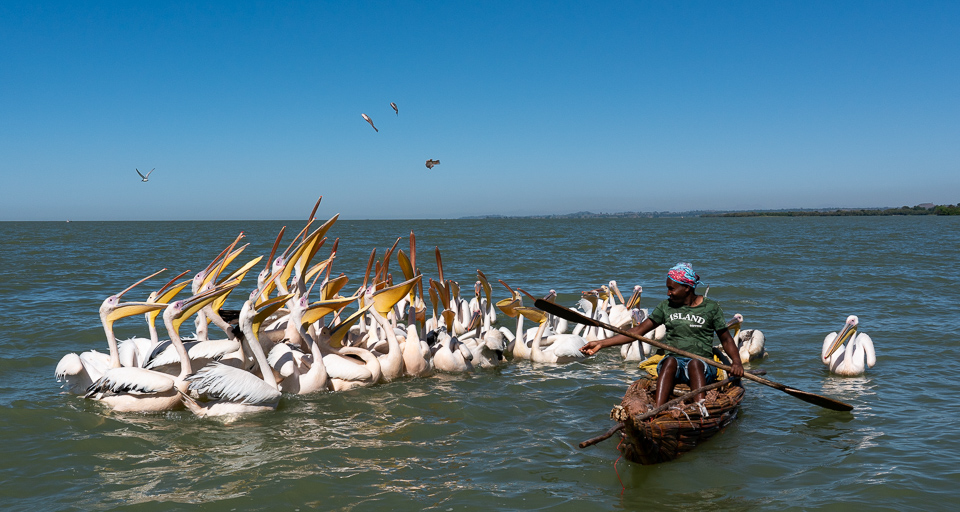
About 200 miles northeast of Lake Tana is the Gheralta Escarpment, an arid landscape whose grand mesas and pinnacles reminded us of the grandeur of the American West. The region’s old churches, some carved into rock cliffs, are full of religious murals and artifacts. Several perch on top of steep rock outcrops, accessible only by precarious pathways with dizzying views. Gheralta is a relaxing region, a great place to chill out. The scenery is fabulous, the air unpolluted and the starry night skies spectacular.
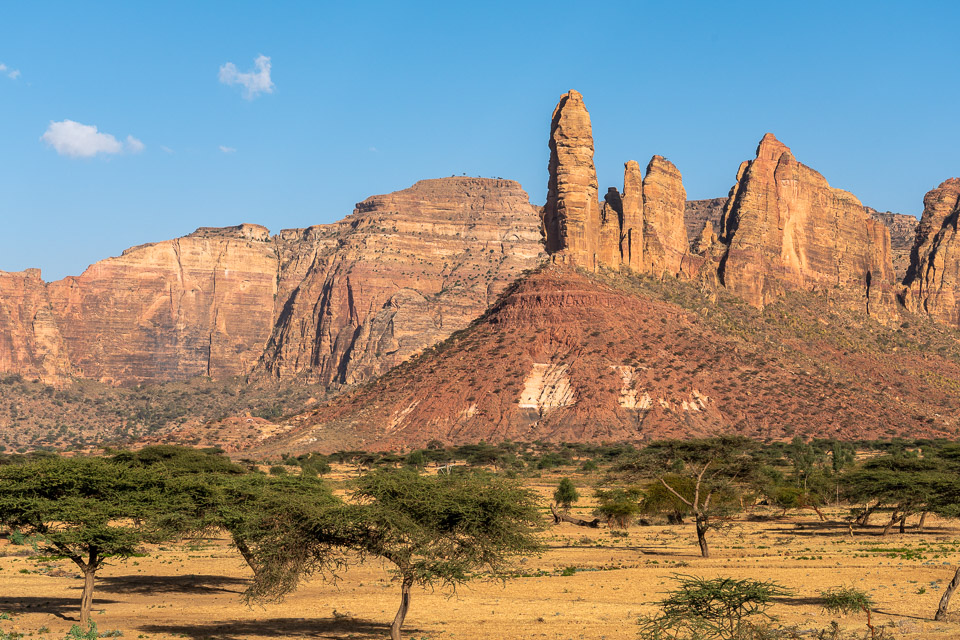
Addis Ababa
Back in Addis Ababa at the end of our trip, we had two days to take in the city’s museums, handicraft markets and restaurants.
Of particular interest was the Ethnographic Museum, a former palace of Emperor Haile Selassie. A fascinating collection of artifacts from ethnic groups across the country, an exhibit of early religious paintings and a display of Ethiopian Orthodox crosses are just a small part of what’s on view.
Of course, we allowed time for shopping, specifically for high-quality, hand-loomed Ethiopian textiles. Our search was rewarded at Sabahar, a company whose skilled artisans spin and weave natural fibers—cotton, silk, linen and wool—into products that would stand out on the shelves of any luxury boutique. We admired scarves, shawls, handbags, table linens and throws in sophisticated colors and patterns. They were as pleasant to touch as to behold.
We also looked for Ethiopian “blessing crosses,” the small handheld crosses priests use to bless the faithful. Although we had already purchased a beautiful specimen in Axum at the Aksumite Handicraft Center, we saw more in Addis Ababa at Shumete, a shop full of treasures –from bowls with beaded lids to collapsible wooden bible stands embellished with pictures of Jesus or the Madonna.
Jazz clubs are popular with Ethiopians and foreign visitors alike, especially those that feature Ethio-Jazz. This musical style, which originated in the 1960s, is a blend of Ethiopian tribal music, Afro-funk, jazz and Latin rhythms.
Traditional Ethiopian food features plenty of stewed meats and vegetables. In Addis, we visited Yod Abyssinian Cultural Restaurant, a traditional dinner and dance venue where the dances are drawn from a cross section of Ethiopia’s ethnic groups. The performers were highly skilled. Most amazing was a woman who spun her head with such velocity it seemed it might spin off into the crowd!
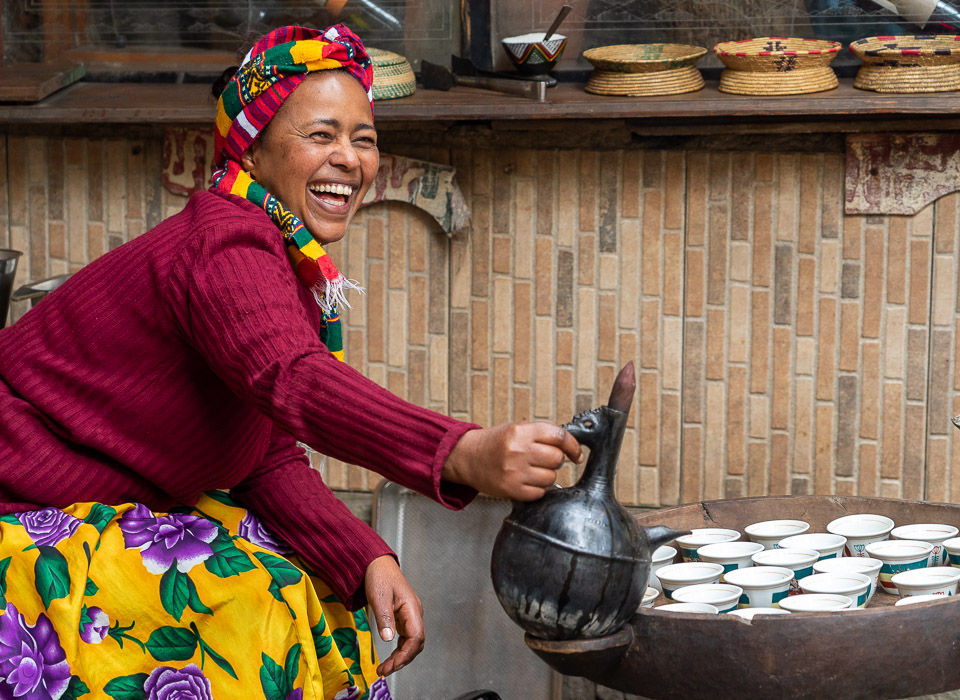
For dinner, vegetables and meat—stewed with dark, flavorful (and sometimes hot) spices—arrived on a bed of injera, a spongy bread that resembles an oversized pancake. To drink, we enjoyed Tej, a wine made from honey and a local shrub called gesho, which has been consumed by Ethiopians for thousands of years. The finale was a cup of the country’s super-strong but delicious coffee, Ethiopia’s national drink.
Ethiopia, by all appearances, is an up-and-coming destination. High-end hotels have opened over the past few years as well as more restaurants that serve international cuisines.
Addis’ busy airport is a hub for Ethiopia’s national airline, regarded by many as Africa’s best. In fact, we found the planes comfortable and the service excellent, even on short flights within the country. Expecting more growth, the country’s leaders are planning a new airport about 20 miles south of the capital. If built as planned, it will be Africa’s largest.
Politically, Ethiopia is more progressive than it was in the past. The popular prime minister, Abiy Ahmed, was awarded the Nobel Peace Prize in 2019 for making peace with neighboring Eritrea. He’s been hailed for restoring freedoms of expression and assembly after years of political and economic repression.
Our trip was too brief to see the entire country. We look forward, however, to a second visit to explore Harar, one of the four holiest places in the Islam world; the Bale Mountains, famous for hiking and birdwatching; and the Omo River Basin in the south, where primitive tribes use their bodies as canvases for art.
Watch for future posts that will cover our trip in greater detail. In the meantime, check out the following:
- Our short documentary
- Bradt Guide to Ethiopia
- Wild Frontiers Travel
